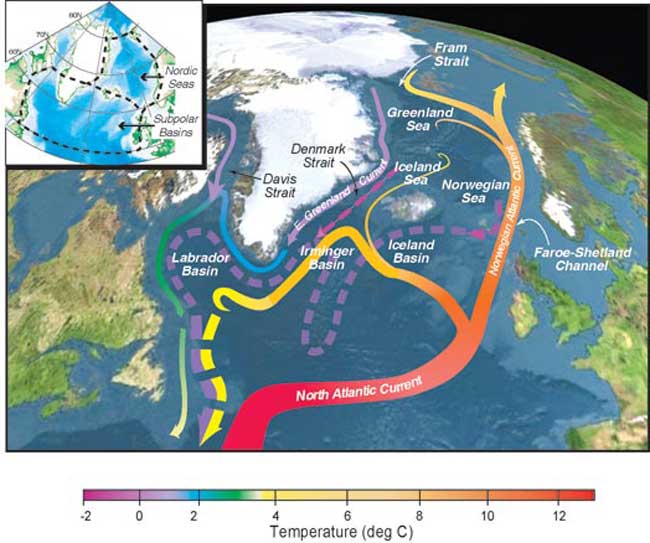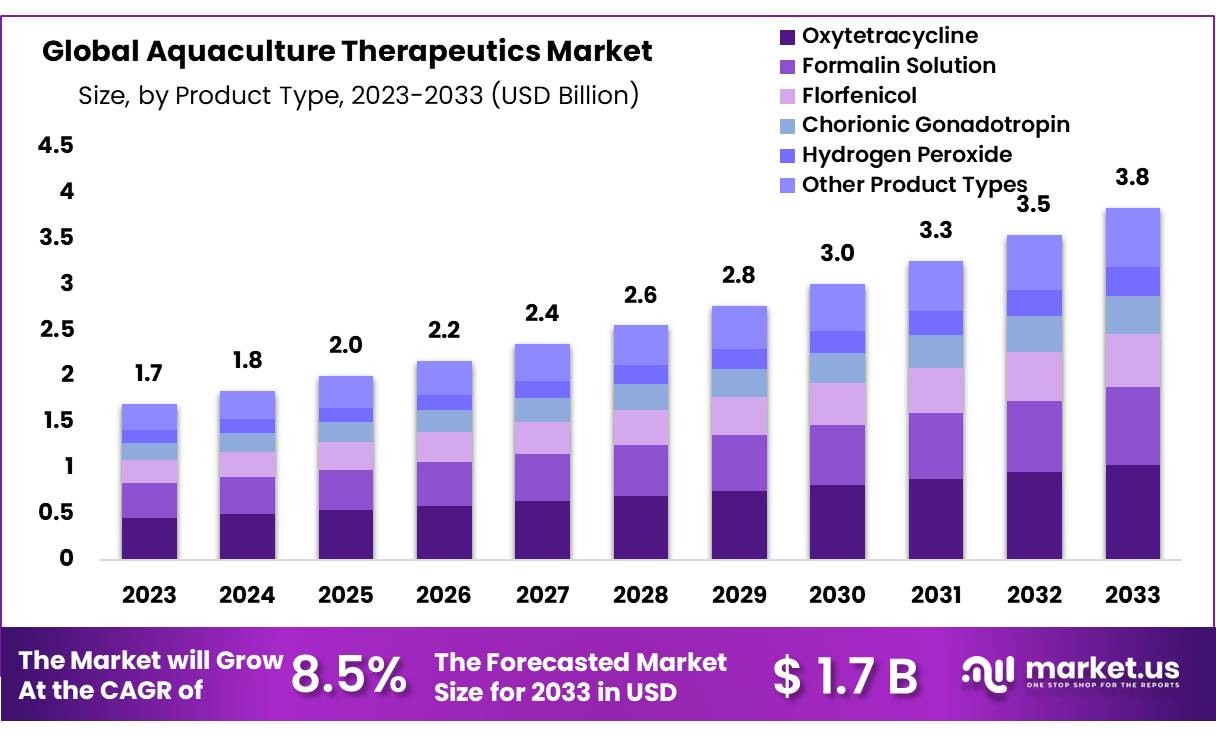The hidden climate battle between forests and the ocean – ScienceDaily

Global Net Primary Production Trends (2003-2021) and Implications for Sustainable Development Goals
A comprehensive analysis of global net primary production (NPP) from 2003 to 2021 reveals a significant increase in terrestrial carbon fixation, partially offset by a decline in marine primary production. These findings have profound implications for planetary health assessments and the advancement of the Sustainable Development Goals (SDGs), particularly those concerning climate action, biodiversity, and food security.
Key Findings on Global Carbon Fixation
Terrestrial Ecosystems (SDG 15: Life on Land)
- A significant increase in terrestrial NPP was observed, at a rate of 0.2 billion metric tons of carbon per year.
- This trend was widespread across temperate and boreal regions, contributing positively to the health of land-based ecosystems.
- A notable exception was observed in the tropics of South America, where productivity stagnated, posing a risk to regional biodiversity and carbon sequestration efforts under SDG 15.
Marine Ecosystems (SDG 14: Life Below Water)
- An overall decline in marine NPP was identified, at a rate of approximately 0.1 billion metric tons of carbon per year.
- The decline was most pronounced in tropical and subtropical oceans, directly threatening the foundation of marine food webs and the objectives of SDG 14.
Integrated Global Perspective
The increase in terrestrial NPP dominated the decline in marine NPP, resulting in a net global increase of 0.1 billion metric tons of carbon per year. This highlights the critical role terrestrial ecosystems currently play in the global carbon cycle.
Environmental Drivers and Climate Linkages (SDG 13: Climate Action)
Factors Driving Terrestrial Productivity Gains
The increase in land-based NPP is linked to several climate-related factors:
- Warming temperatures in higher latitudes have extended growing seasons.
- Localized wetting, forest expansion, and cropland intensification in temperate regions have enhanced plant growth.
These drivers underscore the complex feedback loops between climate change and terrestrial ecosystems, central to the framework of SDG 13.
Factors Driving Marine Productivity Declines
The reduction in ocean NPP is primarily attributed to climate change impacts:
- Rising sea surface temperatures in tropical and subtropical regions.
- Increased thermal stratification of ocean waters, which interferes with the mixing of essential nutrients required by phytoplankton.
This trend represents a significant challenge to climate action, as healthier oceans are vital for carbon mitigation.
Implications for Sustainable Development
Food Security and Economic Stability (SDG 2 & SDG 8)
- Declining NPP in tropical oceans and stagnation on tropical land weakens the base of critical food webs.
- This directly threatens global fisheries and agricultural outputs, jeopardizing progress towards SDG 2 (Zero Hunger).
- Local economies dependent on these natural resources face significant disruption, impacting SDG 8 (Decent Work and Economic Growth).
Biodiversity and Ecosystem Health (SDG 14 & SDG 15)
- The decline in marine NPP has cascading effects on biodiversity, undermining the goals of SDG 14 (Life Below Water).
- Stagnation in tropical terrestrial NPP threatens land-based biodiversity and the stability of ecosystems crucial for achieving SDG 15 (Life on Land).
Climate Change Mitigation (SDG 13)
- Disruptions in tropical NPP, both on land and in the ocean, could compromise the ability of these regions to function as effective carbon sinks.
- This weakening of natural carbon sequestration mechanisms could intensify the impacts of global warming, creating a negative feedback loop that hampers efforts under SDG 13 (Climate Action).
Recommendations and Future Outlook (SDG 17: Partnerships for the Goals)
The long-term trajectory of these opposing trends remains a key unanswered question with major implications for global sustainability. Whether increases in terrestrial NPP can continue to compensate for losses in marine NPP is uncertain. To effectively guide climate change mitigation and protect global food webs, a coordinated and integrated approach is essential. This necessitates enhanced international cooperation and partnerships, in line with SDG 17 (Partnerships for the Goals), to support long-term, unified monitoring of both land and ocean ecosystems as interconnected components of the Earth system.
1. Which SDGs are addressed or connected to the issues highlighted in the article?
The article on global net primary production (NPP) connects to several Sustainable Development Goals by examining the health and productivity of Earth’s foundational ecosystems and the impacts of climate change on them.
-
SDG 13: Climate Action
The study is fundamentally about the global carbon cycle, a core component of the climate system. It discusses how NPP “mitigates anthropogenic carbon emissions and helps to stabilize Earth’s climate.” The analysis of how warming temperatures affect terrestrial and marine photosynthesis directly addresses the impacts of climate change and informs potential “climate change mitigation strategies.”
-
SDG 14: Life Below Water
A significant portion of the article is dedicated to the “weak decline in photosynthesis… among marine algae.” It details a decline in marine NPP, particularly in tropical oceans, linking it to rising sea surface temperatures. This has direct implications for the health of marine ecosystems, “the foundation of tropical food webs,” and vital resources like “fisheries.”
-
SDG 15: Life on Land
The article highlights a “significant increase in terrestrial net primary production,” driven by factors like extended growing seasons due to warming, “forest expansion and cropland intensification.” This relates to the health, management, and productivity of terrestrial ecosystems, which form the basis of life on land.
-
SDG 2: Zero Hunger
The article states that NPP is the “foundation of food webs” and “provides food and fibers for humans.” The findings that declines in ocean NPP can weaken tropical food webs and affect fisheries have direct consequences for food security, especially for communities dependent on marine resources.
-
SDG 8: Decent Work and Economic Growth
The potential disruption of marine ecosystems, particularly in the tropics, is noted to have consequences for “local economies.” This is especially relevant for economies that rely heavily on industries like fisheries, which are threatened by the decline in marine NPP.
2. What specific targets under those SDGs can be identified based on the article’s content?
The article’s findings and discussion align with several specific SDG targets:
-
SDG 13: Climate Action
- Target 13.2: Integrate climate change measures into national policies, strategies and planning. The study’s stated purpose is to “guide climate change projections and mitigation strategies,” which is a key component of this target.
-
SDG 14: Life Below Water
- Target 14.2: By 2020, sustainably manage and protect marine and coastal ecosystems to avoid significant adverse impacts. The article’s analysis of declining marine NPP due to warming waters highlights a “significant adverse impact” on marine ecosystems, underscoring the need for better management and protection.
- Target 14.4: By 2020, effectively regulate harvesting and end overfishing… and implement science-based management plans. The finding that declining NPP can “weaken the foundation of tropical food webs, with cascading effects on… fisheries” provides critical scientific information for creating science-based management plans for sustainable fishing.
- Target 14.a: Increase scientific knowledge, develop research capacity and transfer marine technology. The study itself is an example of this target in action, using “observations from satellites,” “computer models,” and “statistical methods” to increase scientific knowledge about marine primary production.
-
SDG 15: Life on Land
- Target 15.2: By 2020, promote the implementation of sustainable management of all types of forests… and substantially increase afforestation and reforestation globally. The article identifies “forest expansion” as one of the drivers for the increase in terrestrial NPP, which is directly related to this target.
- Target 15.5: Take urgent and significant action to reduce the degradation of natural habitats, halt the loss of biodiversity. The study’s focus on NPP as the “foundation of food webs” means that changes in NPP directly impact biodiversity. The decline in tropical ocean NPP is noted to have “cascading effects on biodiversity.”
- Target 15.9: By 2020, integrate ecosystem and biodiversity values into national and local planning. The research calls for “coordinated monitoring of both land and ocean ecosystems” to inform “ecosystem management,” which aligns with integrating ecosystem values into planning.
-
SDG 2: Zero Hunger
- Target 2.4: By 2030, ensure sustainable food production systems and implement resilient agricultural practices. The article connects NPP to the provision of “food for humans” and mentions “cropland intensification.” The threat to fisheries from declining marine NPP directly challenges the sustainability of a key global food production system.
3. Are there any indicators mentioned or implied in the article that can be used to measure progress towards the identified targets?
Yes, the article mentions several direct and indirect indicators that are used to measure the phenomena discussed, which in turn can be used to track progress towards the identified targets.
- Net Primary Production (NPP): This is the central quantitative indicator used throughout the study. It is measured in “billion metric tons of carbon per year.” It serves as a direct measure of ecosystem health and its capacity to form the base of the food web and sequester carbon (relevant to SDGs 13, 14, 15, 2).
- Surface Greenness (Chlorophyll Abundance): The article states that “specialized satellite instruments measure surface greenness, which represents the abundance of a green pigment called chlorophyll.” This is used as a primary data source and proxy indicator to estimate NPP for both land and ocean ecosystems (relevant to SDGs 14, 15).
- Sea Surface Temperature: This is identified as a key environmental driver and indicator of climate change’s impact. The article explicitly links “rising sea surface temperatures” to the reduction of primary production in tropical oceans (relevant to SDGs 13, 14).
- Air Temperature and Precipitation: These are mentioned as environmental variables analyzed to understand trends in terrestrial NPP. Warming air temperatures extended growing seasons in higher latitudes, and “local wetting” increased productivity, making them key indicators of climate impacts on land (relevant to SDGs 13, 15).
- Strength of Food Webs: While not quantified with a specific number, the “weakening of the foundation of tropical food webs” is an implied qualitative indicator of ecosystem degradation, biodiversity loss, and threats to fisheries (relevant to SDGs 14, 15, 2).
4. Create a table with three columns titled ‘SDGs, Targets and Indicators’ to present the findings from analyzing the article.
| SDGs | Targets | Indicators Identified in Article |
|---|---|---|
| SDG 13: Climate Action | 13.2: Integrate climate change measures into policies and planning. | Net Primary Production (measured in billion metric tons of carbon/year); Air and Sea Surface Temperature. |
| SDG 14: Life Below Water | 14.2: Sustainably manage and protect marine ecosystems. 14.4: Implement science-based management plans for fisheries. 14.a: Increase scientific knowledge. |
Marine Net Primary Production; Sea Surface Temperature; Surface Greenness (Chlorophyll); Strength of Food Webs (implied). |
| SDG 15: Life on Land | 15.2: Promote sustainable management of forests. 15.5: Halt biodiversity loss. 15.9: Integrate ecosystem values into planning. |
Terrestrial Net Primary Production; Rate of Forest Expansion; Air Temperature; Precipitation. |
| SDG 2: Zero Hunger | 2.4: Ensure sustainable food production systems. | Net Primary Production (as foundation for food); Rate of Cropland Intensification; Health of Fisheries (implied). |
| SDG 8: Decent Work and Economic Growth | 8.4: Decouple economic growth from environmental degradation. | Impacts on local economies (e.g., fisheries-dependent economies). |
Source: sciencedaily.com

What is Your Reaction?
 Like
0
Like
0
 Dislike
0
Dislike
0
 Love
0
Love
0
 Funny
0
Funny
0
 Angry
0
Angry
0
 Sad
0
Sad
0
 Wow
0
Wow
0



























;Resize=805#)



















































